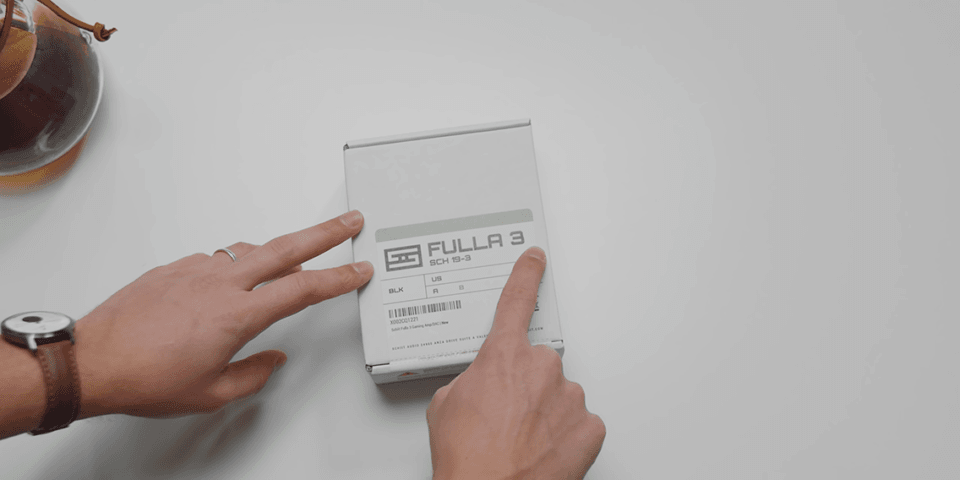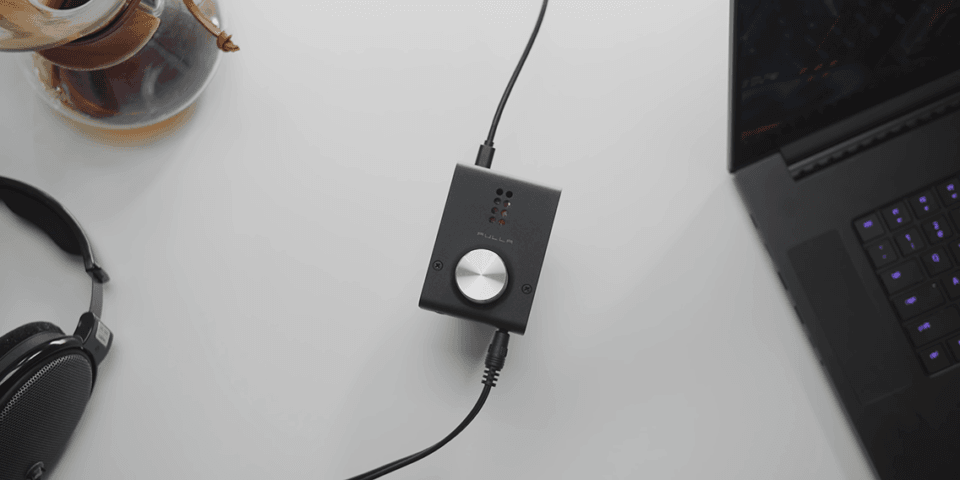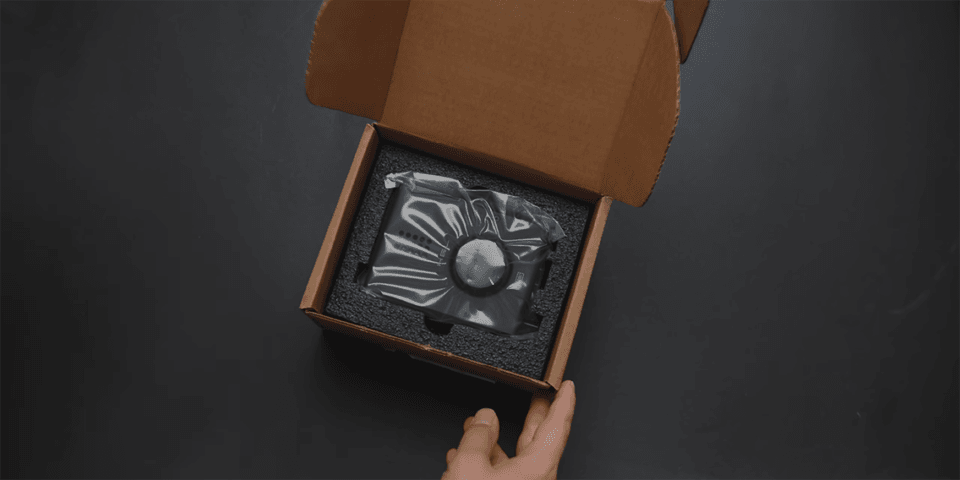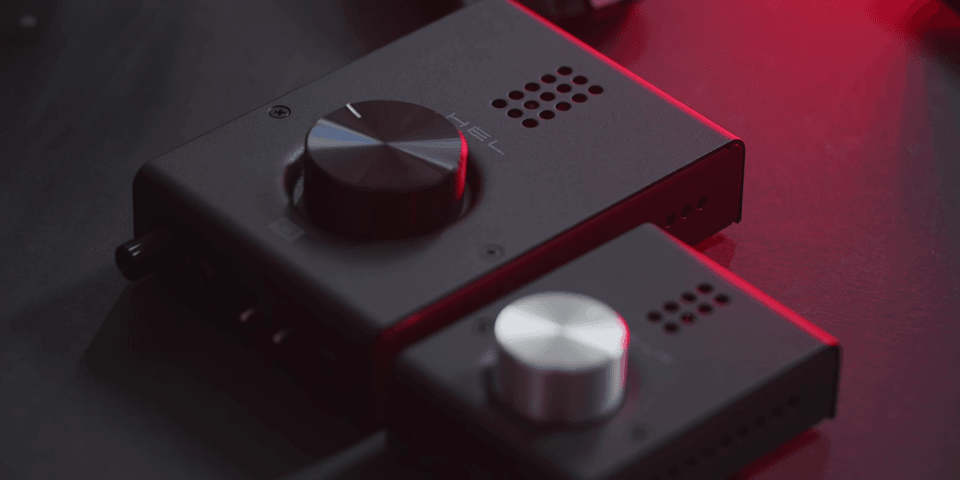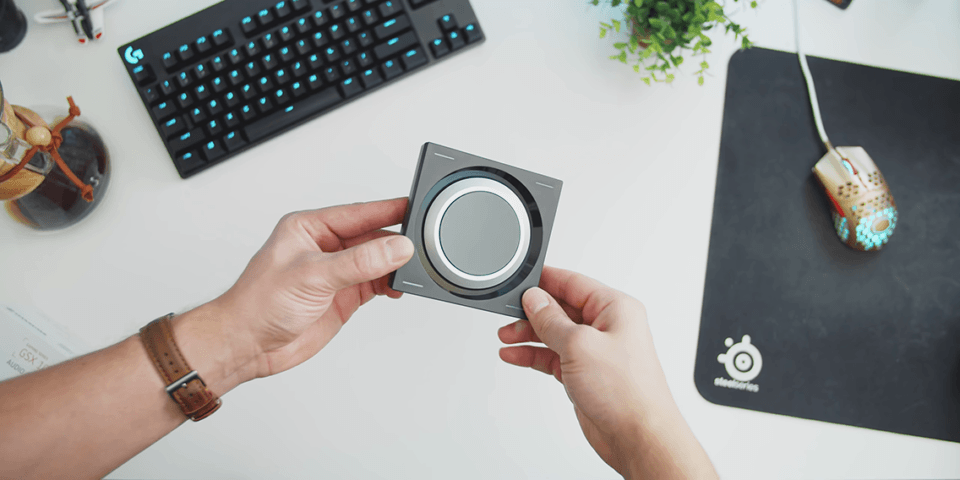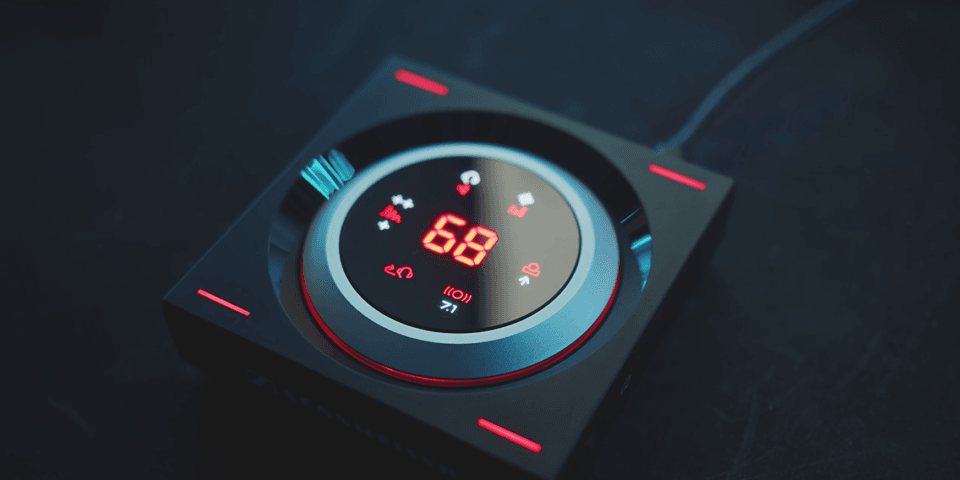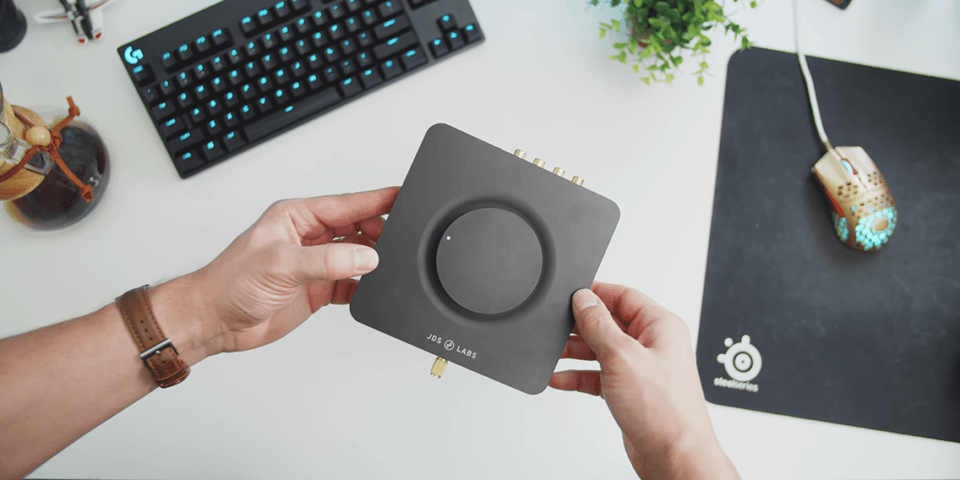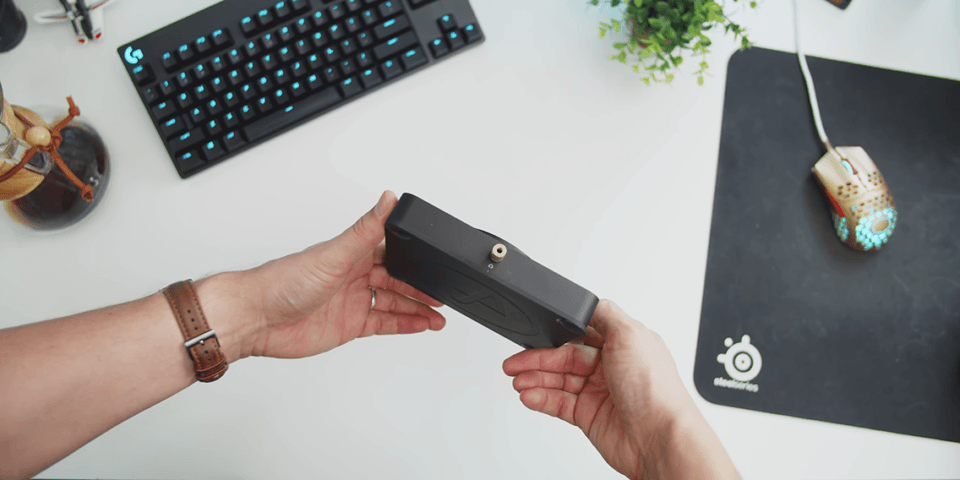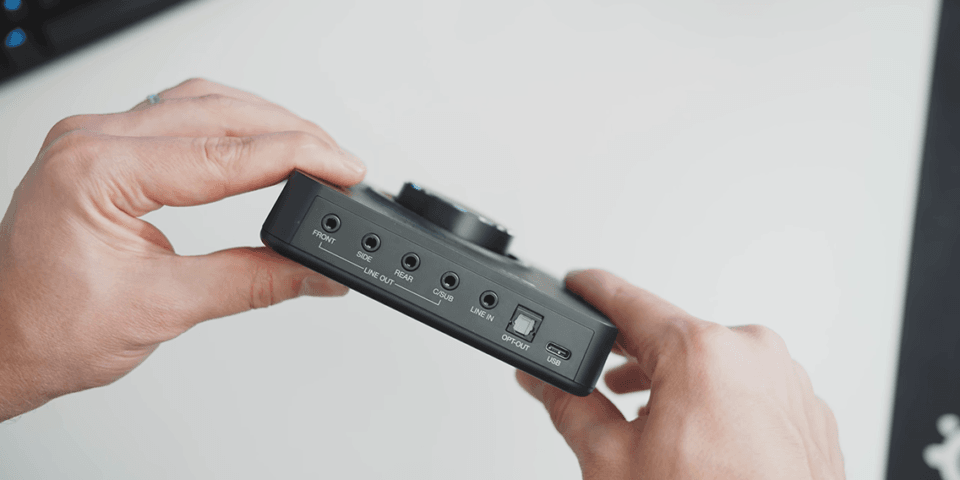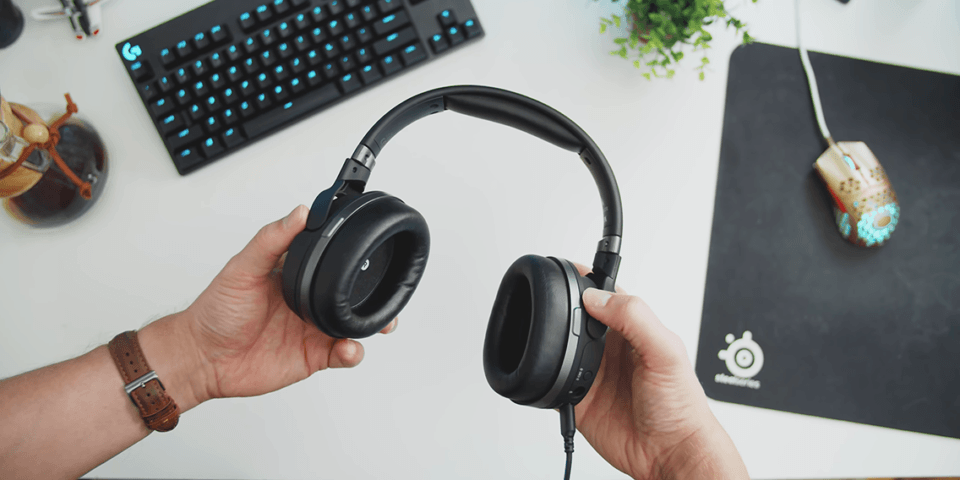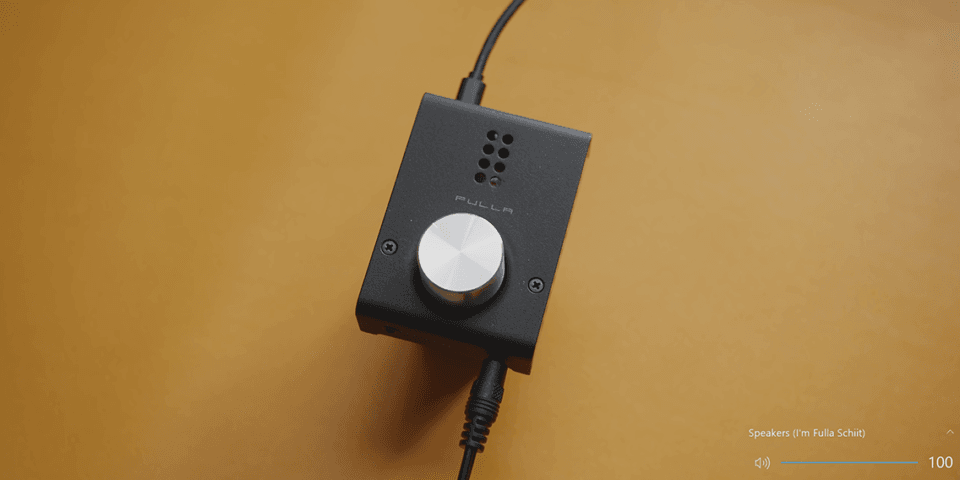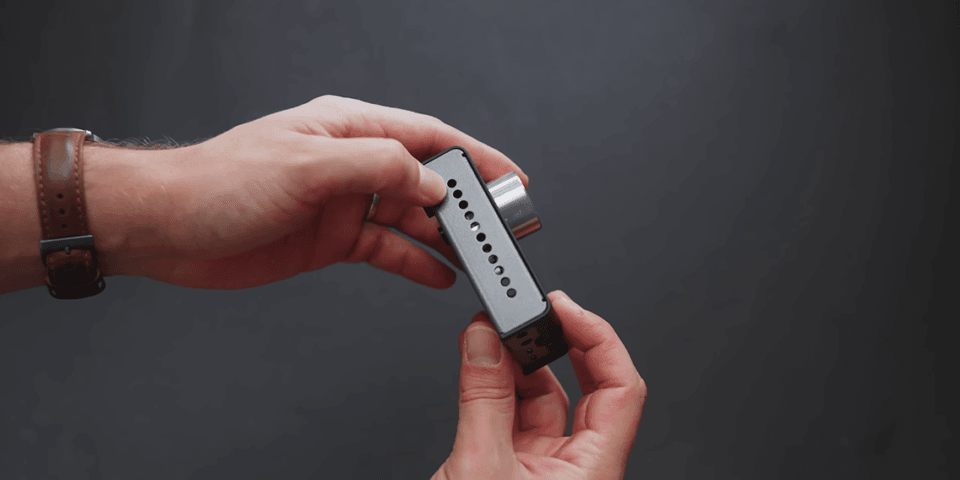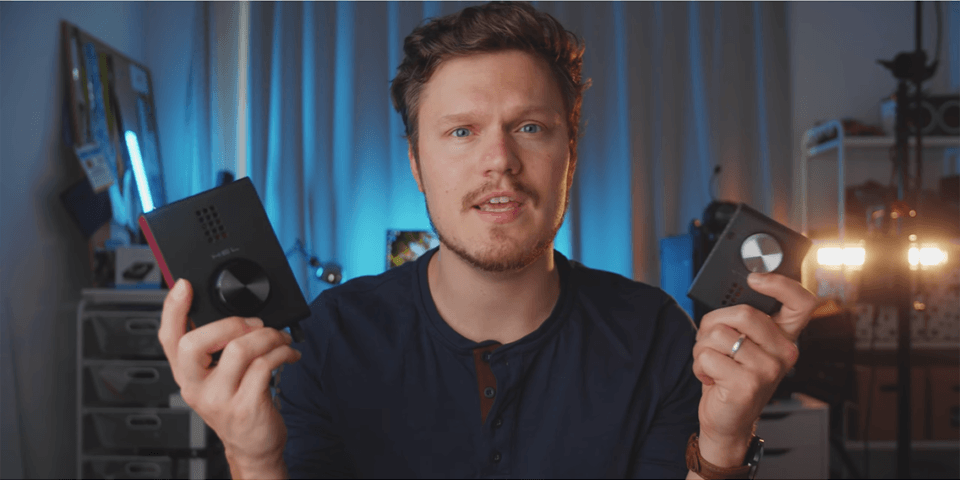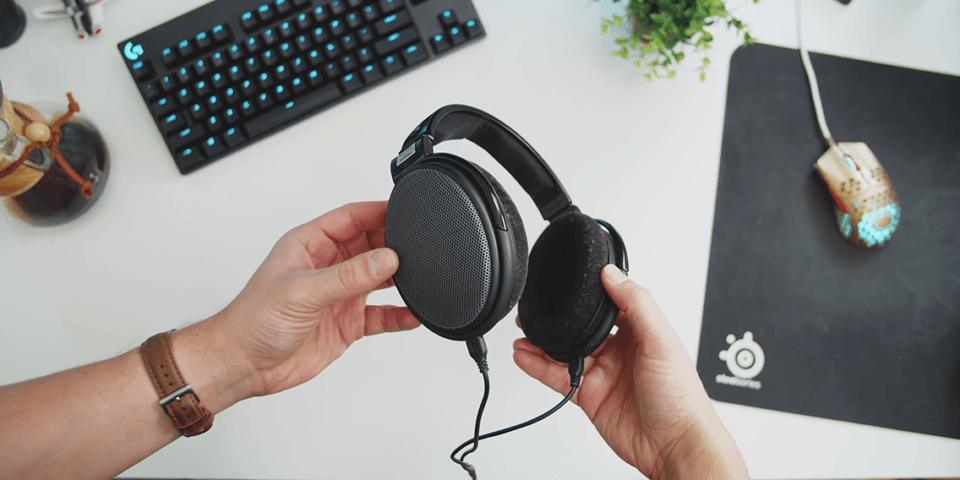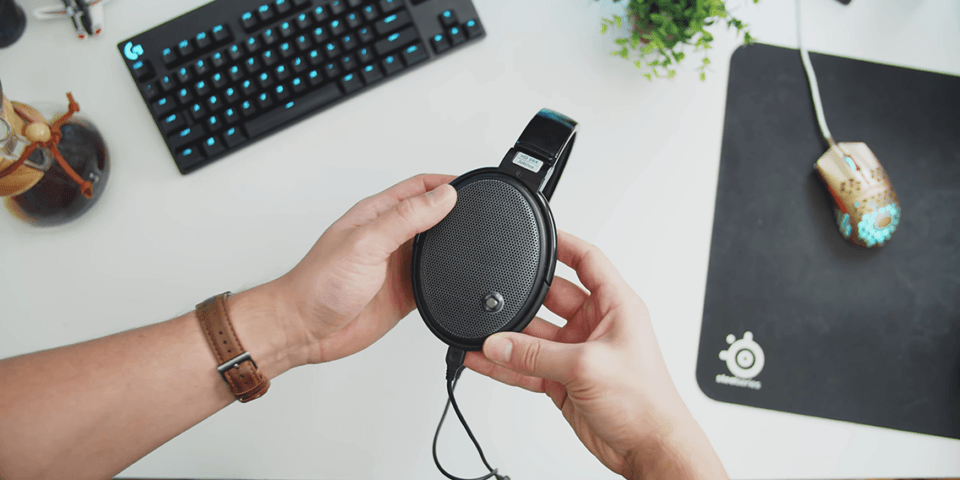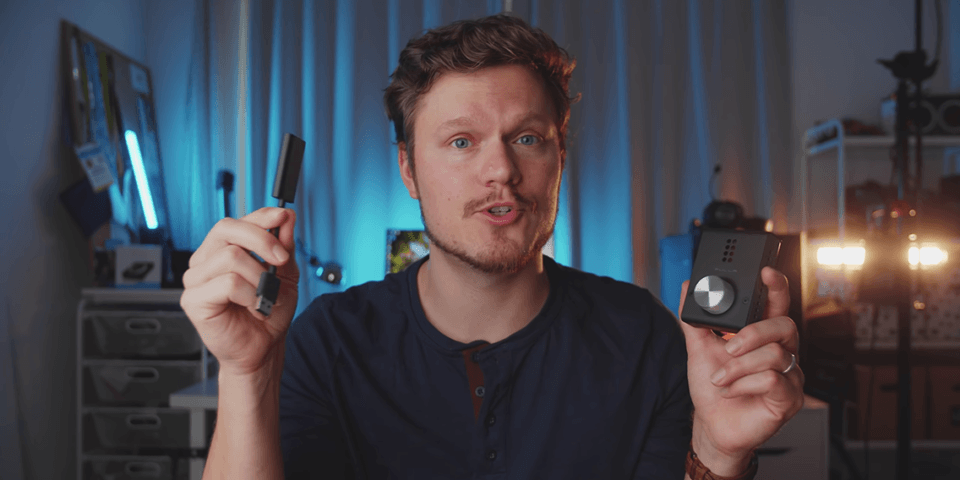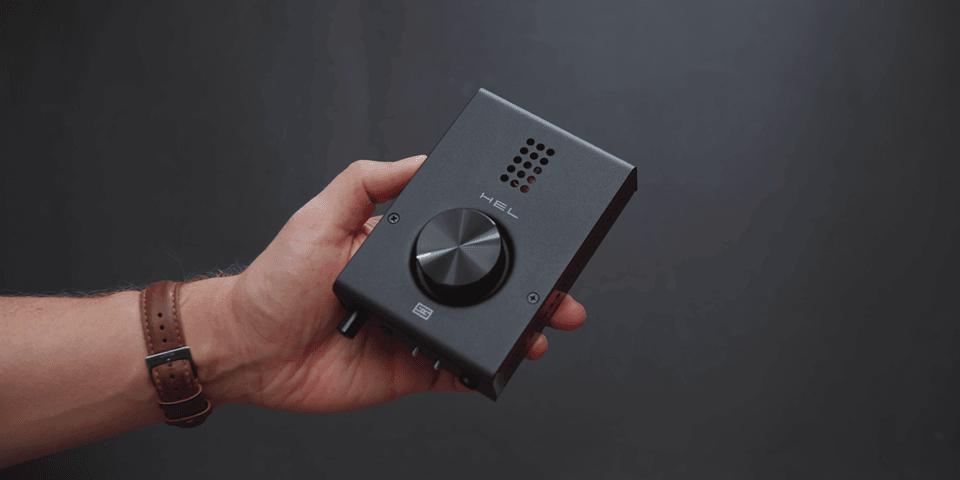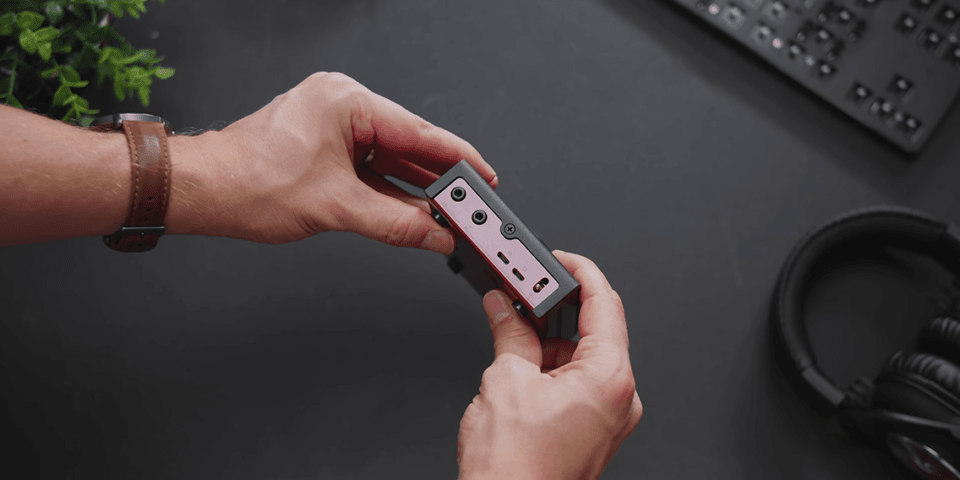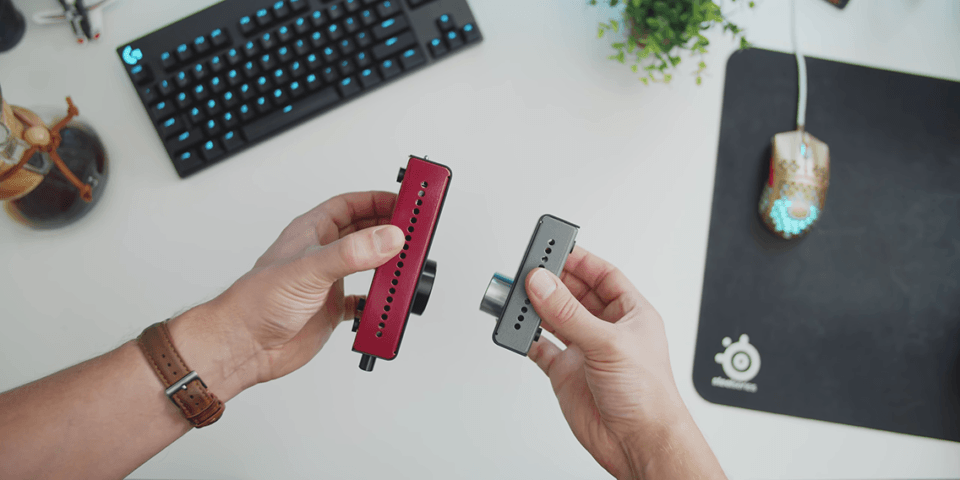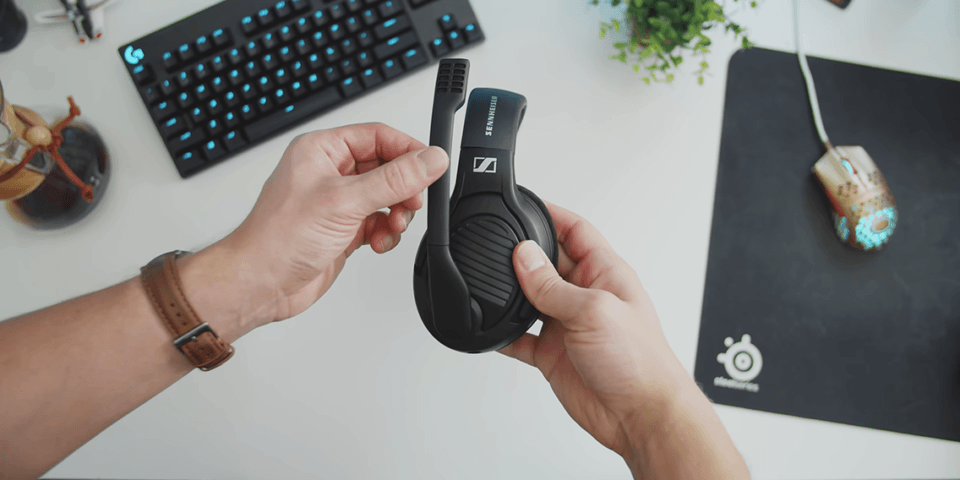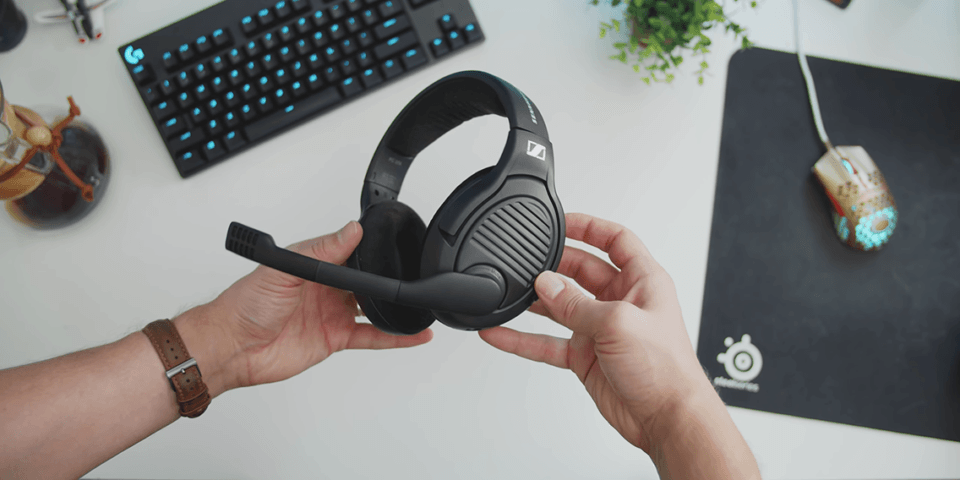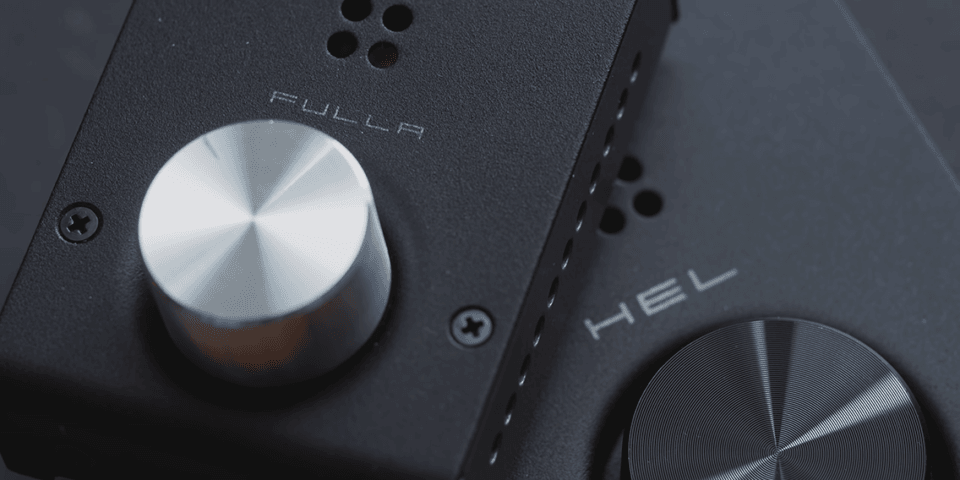The BEST Gaming Audio Setup I’ve Used

Share:
I have always tried to stay clear of bad audio products, and I think that streak is going to continue because I’m finally getting to try out Schiit Audio today.
You all should know by now that my gaming accessories and peripherals are never constant. I have the privilege of switching out keyboards every few months, I have three daily driver mice, and my selection of audio follows the same behavior… until now. I have finally settled on a proper gaming audio set that will be on my gaming station for awhile and I’m going to tell you why.
To start of, let me retrace my audio history for a bit of context. When the Sennheiser GSX1000 external USB sound card came out the experience was absolutely incredible thanks to their binaural engine that opened up any audio environment. It was also brilliant for non-competitive gaming. I did a full audio experience test and the difference when enabling that 7.1 surround sound experience was incredible. In fact, it is one of the best implementations of surround sound I have ever heard. I really loved the natural soundstage expansion especially when combined with a pair of open headphones. While it was brilliant I did eventually swap it out for something more powerful because the GSX1000 could not drive some of my headphones. This is where the JDS Labs Element comes in. This is a really nice amplifier/DAC with beautiful tones and a lot of power behind it. I was using the Element for months and the only reason I stopped was because it requires wall power and I wanted something that was running off a single USB port because I was reconfiguring all of my cable management.
I also was looking for something that had a mic input on the same breakout box. This is when the latest Sound Blaster X3 arrived on my desk, and this is a really good sound card with lots of I/O, a unique variation of surround sound rendering, and a full software suite. By default the X3 in stereo mode is fantastic, it has beautiful sound and it can drive any of my headphones, but it is so feature rich and I was never using any of its features like surround sound, SXFI, and noise cancellation. Therefore, I actually switched to a USB headset instead for simplicity sake. That headset was the HyperX Orbit S, which has planar magnetic drivers that are incredible and have an absolutely amazing bass quality. Once the Fulla 3 came out it was time go back to my roots with a proper comfortable pair of headphones, which is where we are at today.
With regards to the Fulla 3, I love the simplicity of this package. It has a cool industrial look with metal casing, small on desk footprint, no driver software needed, and we have a quality headphone out and mic in. The volume knob is kind of big for the body with a not so visible indicator, but it’s smooth and stable. You can plug in powered monitors at the back and there is also an analog input if you want to use the Fulla 3 just as an amplifier. There is also an additional USB port that can be powered via a battery bank, so you can use this thing as an amplifier when you are mobile. It kind of sucks that its USB port is not USB Type-C – since it is 2020 after all – and it only has a 3.5mm headphone jack instead of a full-size 6.3mm jack, but that’s why the Schiit HEL exists. The HEL is bigger, better, more expensive, and it gives users more control as you will see below.
It is really interesting to see how both of these are labeled as like gaming amplifier DACs because of the mic input, but I also appreciate the lack of any software because I don’t really see it as necessary. For example, I never play with surround sound on and I don’t really change my EQ profiles, I just have my good pair of headphones that I use for gaming and that is it. When I don’t need a microphone the Massdrop x Sennheiser HD 58X Jubilee is fantastic with the Fulla 3. At half power I get wonderful sound, incredible detail, somewhat airy bass, nice soundstage, and that’s absolutely perfect for the games that I play. I’m really comfortable with the HD 58X on the Fulla 3 in terms of positional awareness, so in games like Call of Duty, Escape from Tarkov, and of course CS:GO this audio setup has not failed me once.
Now you might be thinking what is the main difference between the Fulla 3, which is an entry-level inexpensive amplifier/DAC combo, versus something that might already be included with your gaming headset like the above Logitech USB sound card that is included with the Logitech G Pro X headset. First of all, power is a major difference here. The Fulla 3 can drive my HD 58X Jubilee and Drop + HIFIMAN HE4XX planar magnetic headphones without issue. The USB dongle simply doesn’t have enough power, at the 100% volume I feel like it’s still missing a lot of the detail, I feel like I need more volume to get the most out of the headphones. With the Fulla 3 power is good, it’s adequate enough to support the vast majority of headphones that you would logically pair up with a $99 USD amplifier/DAC combo. And the second factor is detail, I feel like there is more perceived layering with the Fulla 3 versus using the USB dongle. Having said that, the USB dongle does have a little extra bass, which has surprised me since the Fully 3 doesn’t have bad bass by any means, but the Fulla 3 is very neutral and there is more layering in the sound and more definition overall.
Stepping things up to the HEL, this thing is legit so it requires wall power power and it lights up to compliment the red exterior. It has a gain switch beside the full-size 6.3mm headphone jack, and it even has microphone level knob to control your voice volume. The main difference between the two is that the HEL is four times more powerful than the Fulla 3. It has more controls, more knobs, and an actual mic gain, which is awesome. It also has mic stereo input versus standard mono. And to be honest, the extra power of the HEL isn’t my style, I’m perfectly satisfied with the power output of the Fulla 3, plus I really appreciate the compact footprint of that amplifier.
Another interesting test was to see how each amplifier/DAC sounded with various headset microphones. The barebones Fulla 3 has a pretty loud vocal pickup and you cannot adjust the levels on the actual device. You can go into the settings and reduce the level if it is too sensitive. There is a bit of processing happening, but the processing is compression, so compressing the voice which adds a little bit more base. There is no aggressive noise cancellation for the background, so I would say it’s a good thing and I haven’t had a complaint. By comparison, the HEL will sound different because it has full-on microphone gain control, which is great if you are peaking or you are not loud enough, you can adjust that on the fly. The HEL does sound slightly cleaner, there is a bit of more processing, a little bit more base, but overall it doesn’t sound as harsh as the Fulla 3. They both sound pretty decent, but the HEL definitely has a bit of an edge. Finally, for the sake of comparison, the Sound Blaster X3 has the best sound cancellation of the background. It has a much cleaner noise floor, but the processing that is happening here is also brilliant. I think it has the best sounding microphone audio out of my entire amplifier/DAC collection. It sounds natural, detailed, with nice bass, but it is a bit quiet so you have to boost the gain for the microphone to be more audible in game. It is pretty cool to see this type of quality in terms of microphone and sound on an amplifier/DAC combo that is only $20 more expensive than the Fulla 3. Lastly, when the microphone plugged directly into my motherboard, the audio has a bit more digital noise in the background because of all the interference inside the system, but it still sounds pretty decent.
And the last piece of the puzzle is the gaming headset. My gaming headset of choice is the Sennheiser GAME ONE or rebranded by Massdrop x Sennheiser as PC37X. It compliments the Fulla 3 perfectly. It is open back, so I’m not completely audio isolated from my space, and that is a benefit for me. This is by far the most comfortable gaming headset design. Its audio signature is sharp with a flat bass profile and I do not miss a sound. Furthermore, the microphone is fantastic, kind of like the benchmark for a gaming headset when it comes to voice quality. On the other hand, when I don’t need the microphone, my choice is the HD 58X Jubilee all the way.
What these two products made me realize is that Schiit audio is doing a really good job trying to cater to the gaming audience, delivering premium quality amplifier/DAC with mic inputs that don’t suck. In my opinion, this is the way it should be without all the value-add gaming features like surround sound, noise cancellation, EQs, and profiles, and etc. I gave never used those features extensively and always revert back to the full stock configuration on any amplifier/DAC combo, headset, or whatever. I really appreciate the convenient plug-and-play barebones nature of the Fulla 3 over any other amplifier/DAC combo that has come through my space, which is why the Fulla 3 and the HD 58X Jubilee plus the PC37X / GAME ONE is my perfect gaming audio setup.
Buy items in this video from Amazon & other partners at the links below:
Schiit Fulla 3 – https://geni.us/FULLA3
PC37x – https://massdrop.7eer.net/jGN3e
HD58x Jubilee – https://massdrop.7eer.net/z5A3O
Sennheiser GSX1000 – https://geni.us/izSM
Sound Blaster X3 – https://geni.us/SBX3
HyperX Orbit S – https://geni.us/ORBITS
Buy direct from Schitt
Schiit Fulla 3 – https://bit.ly/2VMWZGb
Schiit Hel – https://bit.ly/34QI9mi


